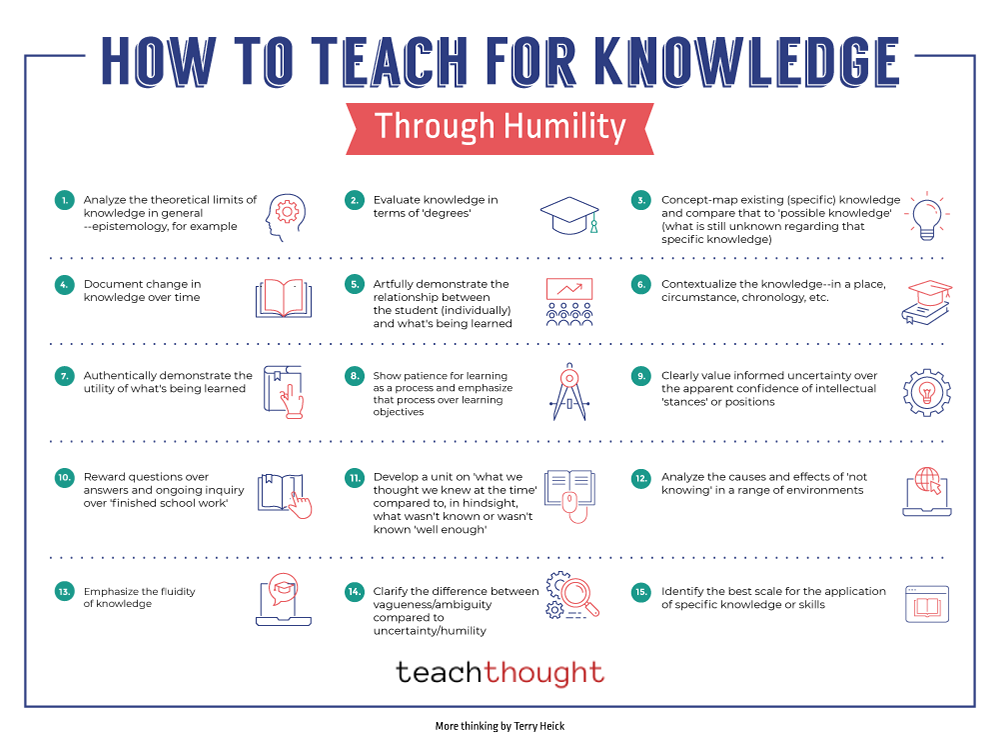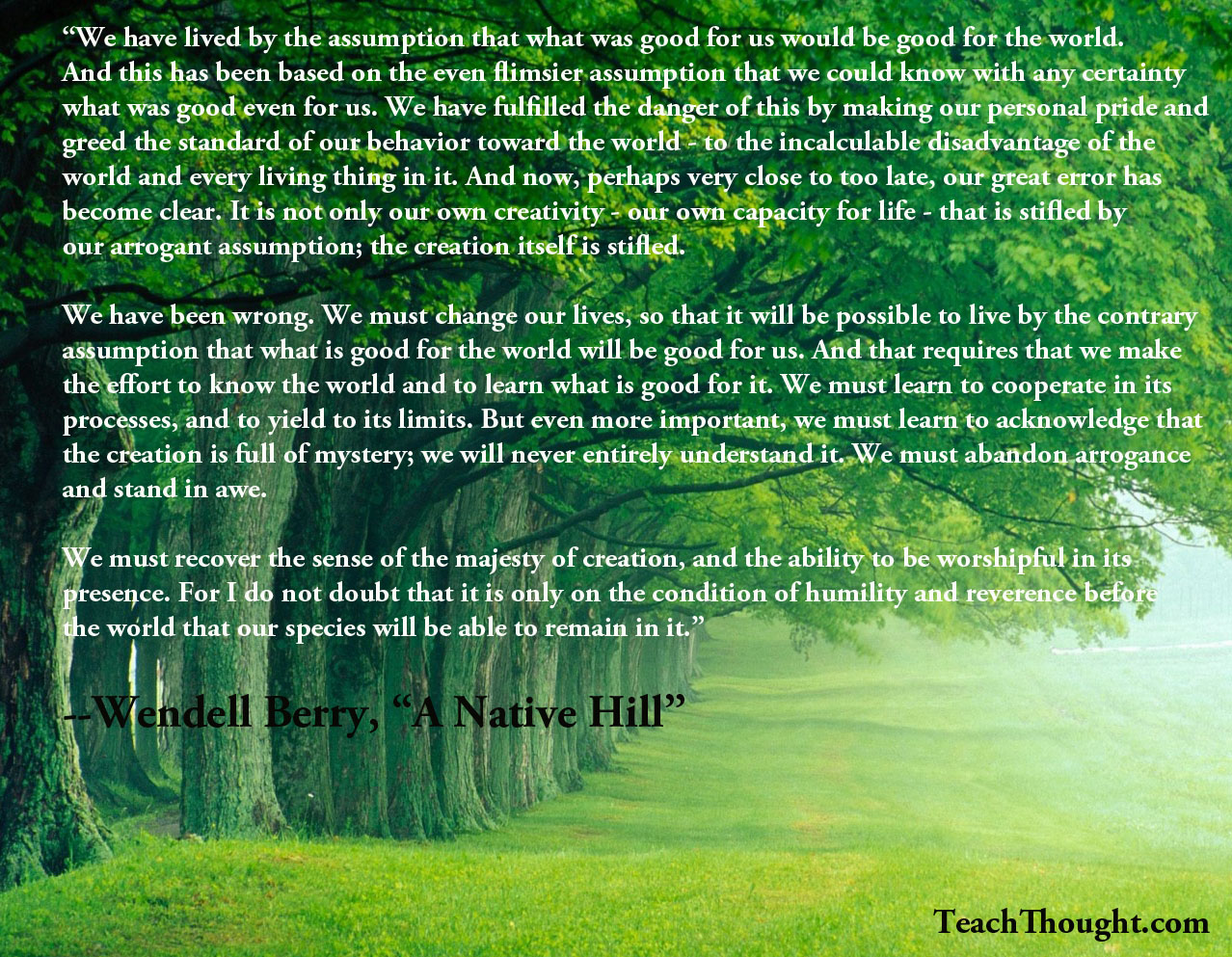

by Terry Heick
Humility is a fascinating beginning point for discovering.
In a period of media that is digital, social, chopped up, and endlessly recirculated, the challenge is no longer accessibility yet the top quality of access– and the reflex to after that judge unpredictability and “fact.”
Discernment.
On ‘Knowing’
There is an appealing and warped sense of “understanding” that can result in a loss of reverence and even privilege to “know things.” If nothing else, contemporary technology accessibility (in much of the world) has actually changed nuance with spectacle, and process with accessibility.
A mind that is correctly watchful is also effectively modest. In A Native Hill , Wendell Berry points to humbleness and limitations. Standing in the face of all that is unknown can either be overwhelming– or enlightening. How would it transform the discovering process to begin with a tone of humbleness?
Humility is the core of vital reasoning. It claims, ‘I do not know sufficient to have an educated opinion’ or ‘Let’s find out to decrease unpredictability.’
To be self-aware in your own expertise, and the limits of that understanding? To clarify what can be understood, and what can not? To be able to match your understanding with an authentic need to recognize– work that naturally strengthens critical thinking and continual query
What This Looks Like In a Classroom
- Assess the limits of expertise in ordinary terms (a straightforward intro to epistemology).
- Examine understanding in levels (e.g., specific, probable, feasible, not likely).
- Concept-map what is presently comprehended concerning a particular subject and contrast it to unanswered inquiries.
- File just how knowledge modifications gradually (individual learning logs and historic snapshots).
- Demonstrate how each trainee’s viewpoint shapes their connection to what’s being learned.
- Contextualize expertise– location, scenario, chronology, stakeholders.
- Show genuine utility: where and just how this expertise is utilized outside college.
- Program persistence for finding out as a process and highlight that process along with goals.
- Plainly worth enlightened unpredictability over the self-confidence of fast conclusions.
- Compensate recurring concerns and follow-up examinations more than “finished” solutions.
- Create a system on “what we believed we understood after that” versus what knowledge reveals we missed.
- Assess causes and effects of “not understanding” in scientific research, history, civic life, or daily decisions.
- Highlight the fluid, evolving nature of knowledge.
- Distinguish vagueness/ambiguity (lack of quality) from uncertainty/humility (recognition of limits).
- Recognize the most effective scale for applying specific knowledge or abilities (individual, neighborhood, systemic).
Research study Note
Research reveals that people that exercise intellectual humility– wanting to admit what they don’t recognize– are much more open to finding out and less likely to hold on to incorrect assurance.
Resource: Leary, M. R., Diebels, K. J., Davisson, E. K., et al. (2017 Cognitive and interpersonal attributes of intellectual humility Personality and Social Psychology Publication, 43 (6, 793– 813
Literary Example
Berry, W. (1969 “A Native Hillside,” in The Long-Legged House New York City: Harcourt.
This idea might appear abstract and level of location in increasingly “research-based” and “data-driven” systems of knowing. But that is part of its value: it aids pupils see knowledge not as repaired, yet as a living procedure they can accompany care, proof, and humbleness.
Teaching For Knowledge, Learning Through Humility

